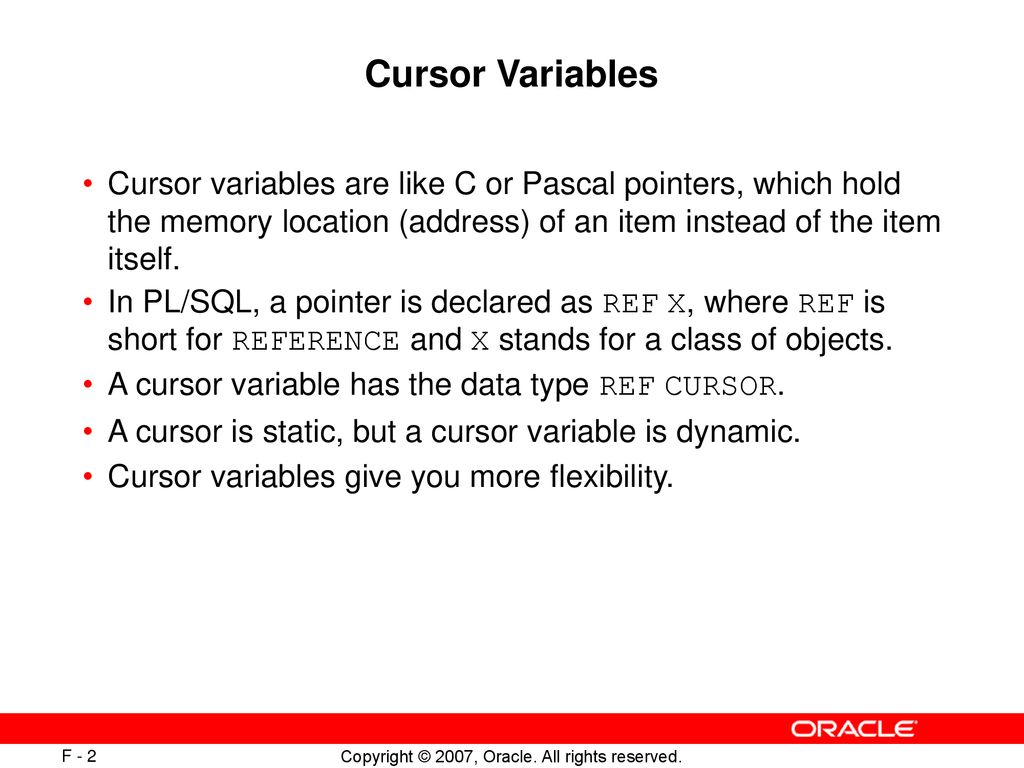
#Ref cursors windows
Otherwise, it might be time to wipe and reset Windows to restore stability, although you’ll need to restore your files from a backup afterwards.
#Ref cursors Pc
If your hardware is faulty, you’ll need to consider upgrading your PC or replacing it entirely. If you can’t fix the problem using the steps above, you might need to consider more drastic options.

Make sure to keep your important files backed up elsewhere so you don’t lose your files when your PC crashes and ensure you have system restore enabled. Recovering from BSOD Errors on WindowsĪ reference by pointer BSOD error isn’t usually something to worry about, but without regular system maintenance in place, it could point to a serious problem with your PC. You can replace individual components (such as your motherboard or CPU), but if the PC is too old to repair, you may need to consider a complete upgrade, replacing your PC entirely with a fresh pre-built PC or building your new PC instead. If your hardware is the problem, your only answer is to replace it. Your next step is to test your hardware thoroughly, using CPU stress tests and memory testing tools, as well as checking your hard drive for errors. If heat is an issue, you’ll need to clean out your PC and consider upgrading your cooling to help resolve the issue. Press your PC’s reset button (or press and hold your PC’s power button) to force a reboot, then repeat this at least two more times. To do this, power up your PC and wait until the Windows logo appears.
#Ref cursors drivers
Safe Mode runs Windows with the most basic set of drivers and system processes required to function properly, allowing you to troubleshoot driver issues without risking another BSOD. If stuck in a reference_by_pointer BSOD loop (with each reboot causing another BSOD message), you’ll need to boot into Safe Mode to begin the troubleshooting process.

Switch to Safe Mode for Troubleshootingįollowing a BSOD, your PC is forced to reboot. Once you’ve located a possible cause (such as a malfunctioning driver), you can follow the steps below to resolve the issue. sys file extension) or a system process (such as ntosknrl.exe). So you can include as many REF CURSOR parameters as you want - your stored procedure will have the ability to return that many recordsets.
#Ref cursors full
You will find vital clues behind the cause of a reference by pointer BSOD, such as a driver file (with a. Treated just like a data type, your stored procedure takes REF CURSORS as OUT parameters, and you can return a full recordset in each REF CURSOR parameter back to the caller. However, it can also be caused by other issues, such as corrupt system files or even failing hardware.īefore you try anything else, you should check your BSOD memory dump files for more information. Hardware drivers are the most common cause, with graphics cards and other components like network devices often causing the message. Of course user_tables or dba_tables will have a count of the number of rows (NUM_ROWS), but this is only as up to date as the statistics.Įxample: CREATE PACKAGE my_cursor_types ASĬREATE PROCEDURE GetCarter ( proc_cv IN OUT my_cursor_types.In almost every case, however, this is usually caused by a buggy piece of software.


Until Oracle has retrieved all the rows then by definition it does not have an accurate record of how many there are. The way to be sure of this is to declare the TYPE in aĬursor %ROWCOUNT will display the number of rows retrieved so far. In the DECLARE section of the client-side application. Note that the cursor variable must be the same TYPEįor both the packaged procedure on the server and The client-side application will then perform further Typically the REF CURSOR definition and the OPEN FOR SELECT will be in a packaged procedure on the serverĪ client-side application will then call the procedure - thus obtaining a valid open cursor with the correct SQL Fetch and Close a REF Cursor FETCH a REF cursor:įETCH Ĭlosing a cursor releases the context area.Ĭursor %ROWCOUNT - int - number of rows fetched so farĬursor %ROWTYPE - returns the datatype of the underlying tableĬursor %FOUND - bool - TRUE if >1 row returnedĬursor %NOTFOUND - bool - TRUE if 0 rows returnedĬursor %ISOPEN - bool - TRUE if cursor still open


 0 kommentar(er)
0 kommentar(er)
